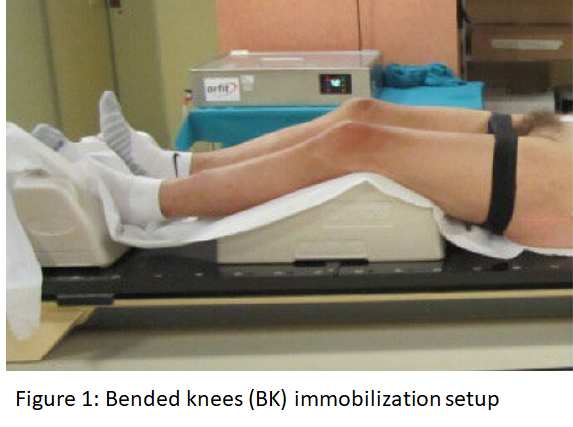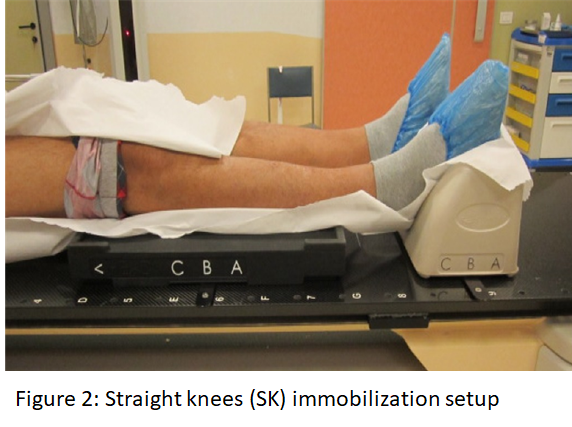Impact in setup accuracy of two different immobilization devices in prostate cancer radiotherapy.
PO-1851
Abstract
Impact in setup accuracy of two different immobilization devices in prostate cancer radiotherapy.
Authors: Valerio Pisoni1,2, Denis Panizza3,2, Paolo Caricato3,4, Valeria Faccenda3,4, Sara Trivellato3, Stefano Arcangeli1,2
1ASST Monza, Department of Radiation Oncology, Monza, Italy; 2University of Milan Bicocca, School of Medicine and Surgery, Monza, Italy; 3ASST Monza, Medical Physics Department, Monza, Italy; 4University of Milan, Department of Physics, Milan, Italy
Show Affiliations
Hide Affiliations
Purpose or Objective
Accurate patient setup is essential for delivering radiation therapy
(RT) in accordance with the treatment plan. Interfraction translational and rotational
errors have been determined from daily kVCBCT to evaluate the accuracy of two
different immobilization devices in both moderate and extreme hypofractionated prostate
RT.
Material and Methods
Daily CBCTs from 40 and 33 prostate cancer patients who underwent at a
single institution moderate hypofractionated RT in 20 fractions with bended
knees (BK) and extreme hypofractionated RT in 4 or 5 fractions with straight
knees (SK), respectively, were retrospectively analysed and compared, amounting
to 1180 analysed datasets. The two immobilization devices are shown in Figures
1 and 2. Systematic and random shift
components were evaluated using a clipbox matching based on a grey-value
algorithm and validated by experienced radiation oncologists and RTTs. For both patient populations, the mean
value of the average deviations M, the group systematic error ∑ and the group random error σ were computed for translations and rotations
on all axes, respectively. Additionally, a Wilcoxon Mann Whitney test was
performed to assess statistical significance between results (p=0.05).


Results
Translation and rotation M values were generally less
than 1 mm and less than 0.6°, respectively. Statistical analysis between M values of the two populations led to
comparable results, except for a significant improvement in X translational
axis (p=0.006) and a significant degradation in Z rotational axes (p=0.003) in
SK setup respect to BK. Both systematic and random translation errors
were negligible and corrected by the Linac couch movement. The systematic and
random rotational errors, which could not be corrected by standard treatment
tables, resulted in less than 0.6° on the Y and Z axes for both devices. On the
X axis, ∑ component was 1.38° for SK positioning and 1.44°
for BK, while σ component was 0.91° and 1.05° for SK and BK, respectively. The
overall number of problematic setup sessions was very low and limited to a
small subset of patients.
Conclusion
Both positioning with straight knees and bended knees
showed extremely high accuracy with no significant differences for moderated
and extreme hypofractionated prostate radiotherapy. Patients experienced
optimal comfort for the whole treatment duration with both devices. Notably,
RTTs involved in patient positioning reported an overall perceived improvement
in patient setup with straight knees and a substantial reduction in the
procedure time.